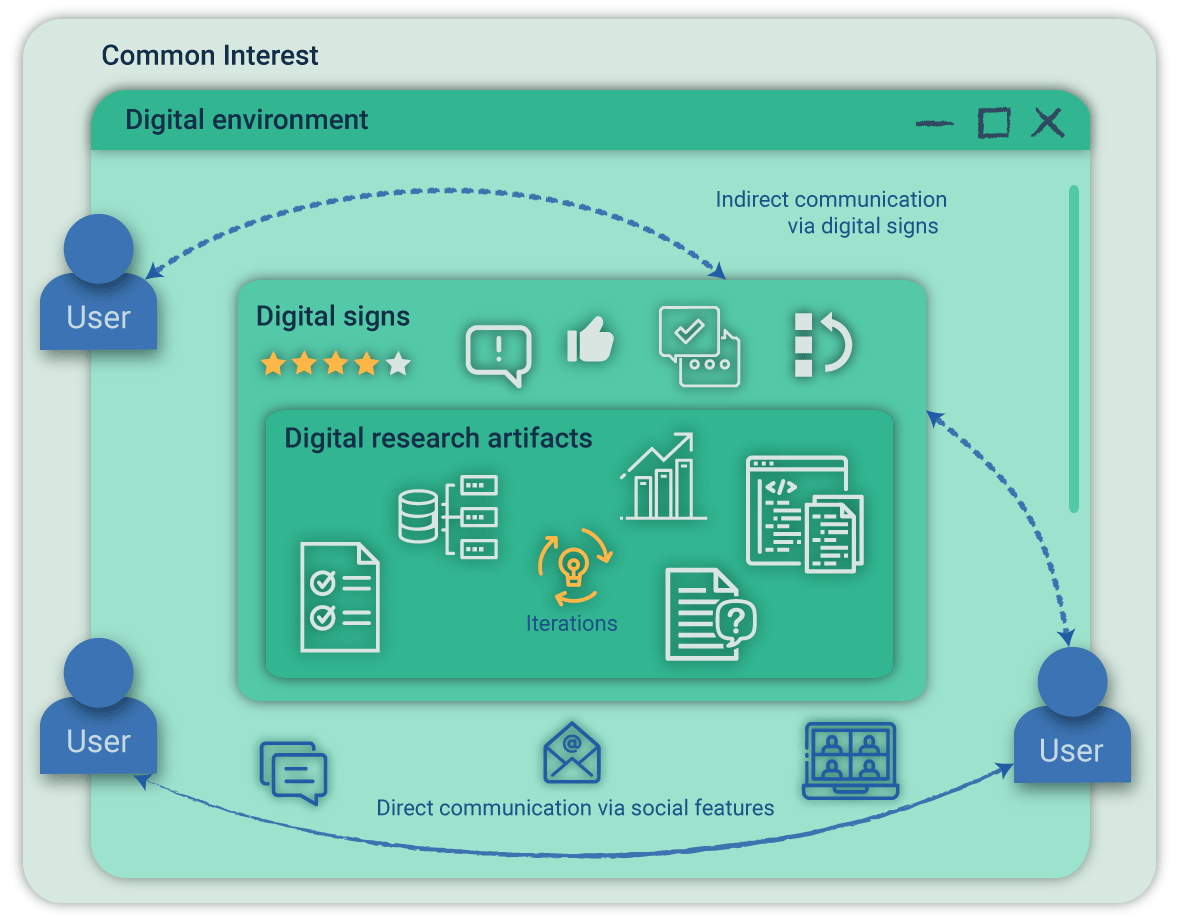What is stigmergy in web design?

(Wondering how to add your blog posts to this blog? Have a look here: Get involved)
What is stigmergy?
Stigmergy is a term that originates from biology and describes how agents, e.g. termites, ants or bees, coordinate indirectly via signs, i.e. traces in the environment, to achieve complex tasks of a shared purpose, like building a terminte mound or honeycombs. Etymologically, the word is composed of the Greek works for “mark”/”sign” and “work”/cooperation. An action of an agent leaves a trace that another agent recognizes and that stimulates them to perform a new action in return (Kostakis & Bauwens, 2021).
What is stigmergy in web design?
In web design, stigmergy is used as a metaphor for online environments in which users coordinate indirectly via digital signs (Dipple et al., 2012). The agents are users, their environment is the online infrastructure that they make their contributions through, and the signs are user-generated contents. A stigmergic environment for online citizen science is represented in Figure 1. What is special in this case, is that the digital signs are “research objects”. Apart from that, this model could also be applied to other contexts of knowledge production.

The model shows a common interest of contributors at the outermost layer, which reunites people to work together in an online environment. In this online environment, they coordinate directly via chat, mail or (video) call systems, or indirectly via digital signs. Digital signs can be the objects that are produced themselves (e.g. texts, research protocols, data, analyses…), or related signs, like ratings, comments, or the object’s edit history.
Why is it important for peer production?
Stigmergic collaboration is a crucial element of peer production: People self-organize their work and self-assign themselves tasks via an online infrastructure, so in order for them to understand which tasks are open at the moment, they need to coordinate indirectly via digital signs. This allows distributed production via contributions of a large number of people, that in the end fits together to form a whole (Kostakis & Bauwens, 2021).
References
- Content partly taken from: Kloppenborg, K., Ball, M. P., & Greshake Tzovaras, B. (2021, May 23). Peer Production Practices: Design Strategies in Online Citizen Science Platforms. https://doi.org/10.31235/osf.io/rw58y
- Dipple, A., Raymond, K., & Docherty, M. (2012, June). Stigmergy in web 2.0: a model for site dynamics. In Proceedings of the 4th Annual ACM Web Science Conference (pp. 86-94).
- Kostakis, V., & Bauwens, M. (2021). Grammar of Peer Production. The Handbook of Peer Production, 19-32.
- Title image from https://pixabay.com/photos/termite-hill-ants-landscape-695209/